
Digby, Nova Scotia
Digby County, est. 2,001 residents
Digby, Nova Scotia, is a delightful village that shines because of its hardworking community. The land was first the home of the Mi’kmaq people as the rich Fundy ecology created a favourable habitat for them to live. Many used the Annapolis Basin as traditional hunting grounds and camped along the shore as they made their winter food supply during the summer months.
European settlers began to arrive during the early 1600s, and many Acadians, and later British, populated the region. As time went on, Digby and the surrounding land were primarily unsettled and mainly used during the summer months with fishing settlements scattered along the Fundy shores.
Early History of Digby
It wasn’t until 1783 that a large influx of refugees came from the New England area during the American Revolution. This group is often referred to as United Empire Loyalists who fought or sided with the British. After the surrender of New York City in 1783, around 1,300 Loyalists arrived in Conway, Nova Scotia, in early June of that same year. Royal Navy Officer Admiral Robert Digby organized the evacuation and commanded the HMS Atalanta, the first of three ships to make landfall.
For their loyalty to the Crown, tracks of land and supplies were given out, which helped the population of the area finally begin to grow. Despite this generosity from the British government, the first winter was a difficult one for the settlers. Many were forced to live in log huts while awaiting the following year’s construction of their permanent homes.
Determination and hard work transformed the settlement Admiral Digby led from a tiny village into a town. The townspeople unanimously petitioned Governor John Parr in Halifax to rename the settlement Digby in honour of the much-respected admiral in 1787.
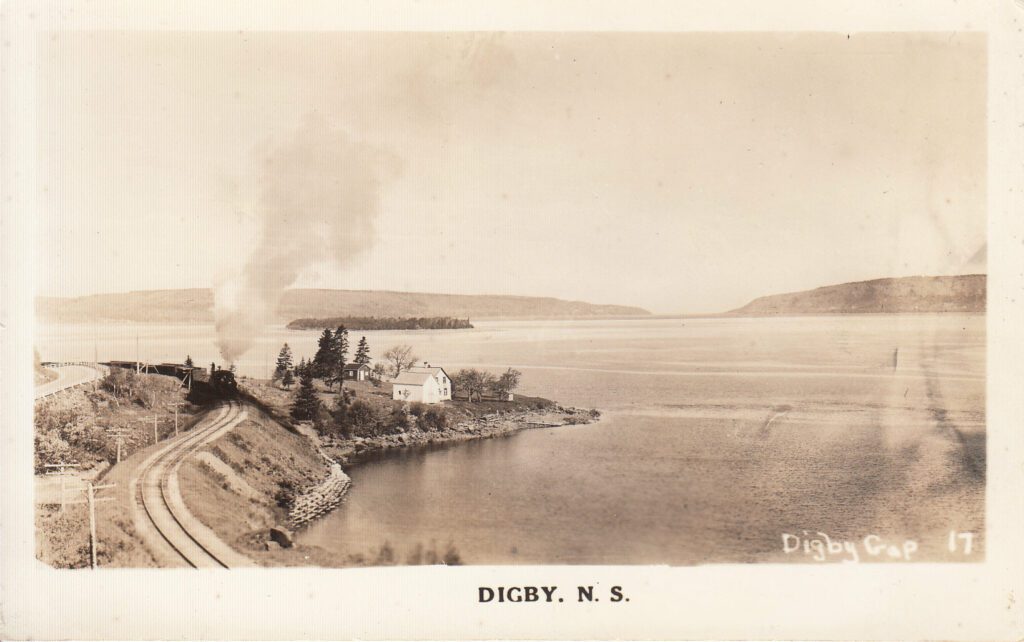
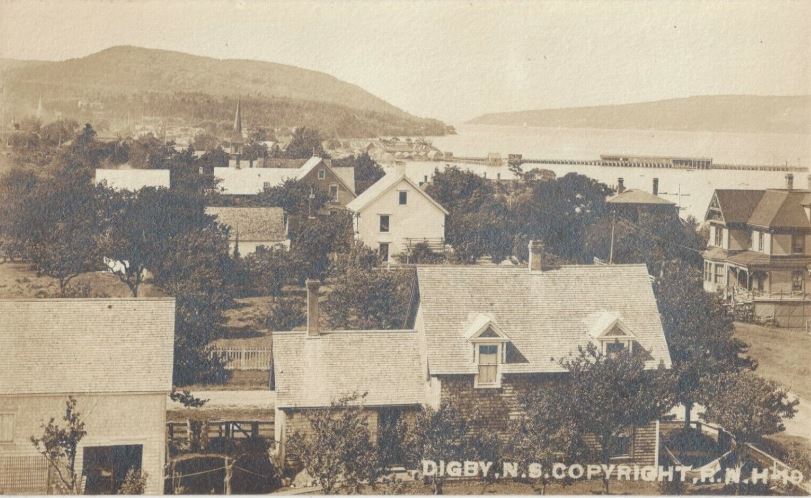
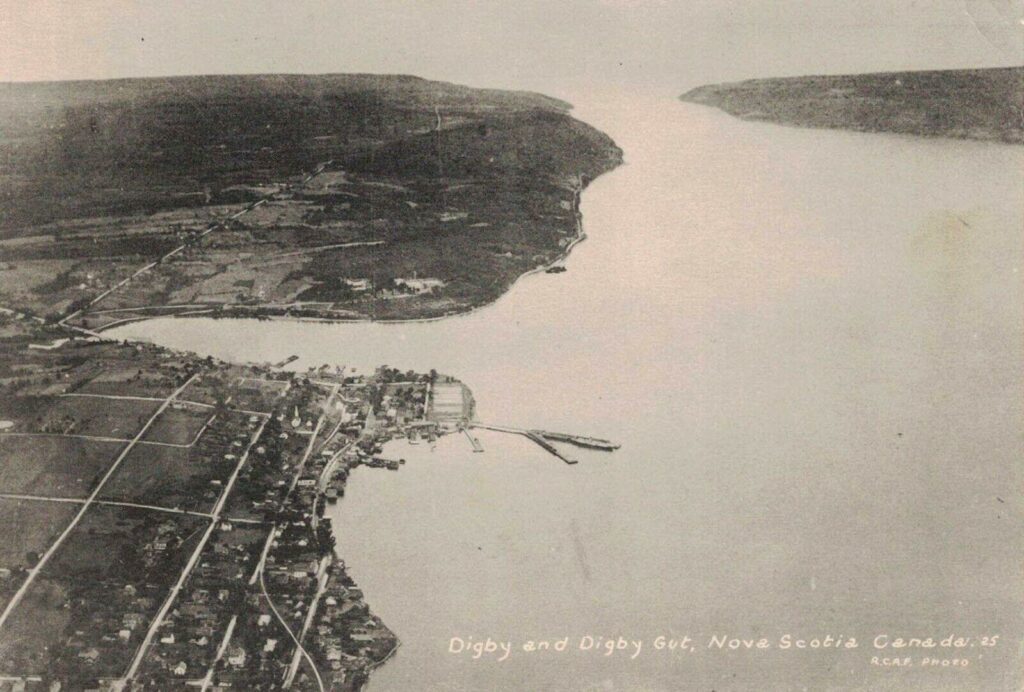
By the mid-19th century, the lumber industry became the area’s main export. Building ships to carry the goods to markets along the East Coast and West Indies brought more prosperity to Digby. Fishing and farming were also seen as staples of the economy and helped the town get by after the lumber era declined. The centralization of cities and larger villages might have slowed Digby’s development, but a new industry was about to turn the town around.
Fishing for Scallops
Digby is known today as “The Scallop Capital of The World,” but a century ago this wasn’t the case. While local fishermen knew scallops were present in the area for many years, the first Bay of Fundy scallop beds were not discovered until around 1920. In 1922, a total of 600 scallops were harvested, thus beginning a tradition that has stood the test of time.
Recognition for Digby’s scallop industry can be given to Captains Roland Gilbert Wormell, J.W. Hayden, and Arch Amero. This trio started scallop fishing in the Bay of Fundy using a 36-foot sloop and one drag. Wormell initially used a hand rake he found in Hayden’s clam factory to fish for scallops before developing a model of rake that featured a metal frame and a mesh bag attached to a series of teeth to hold the catch. This new model with nine metal cages attached by chains could be used to drag along the deep ocean floors of the Bay of Fundy and became known to other fishermen as the “Digby Drag.” Wormel received a patent on June 28, 1927, for the device and A.J. Trohon manufactured the first two drags.
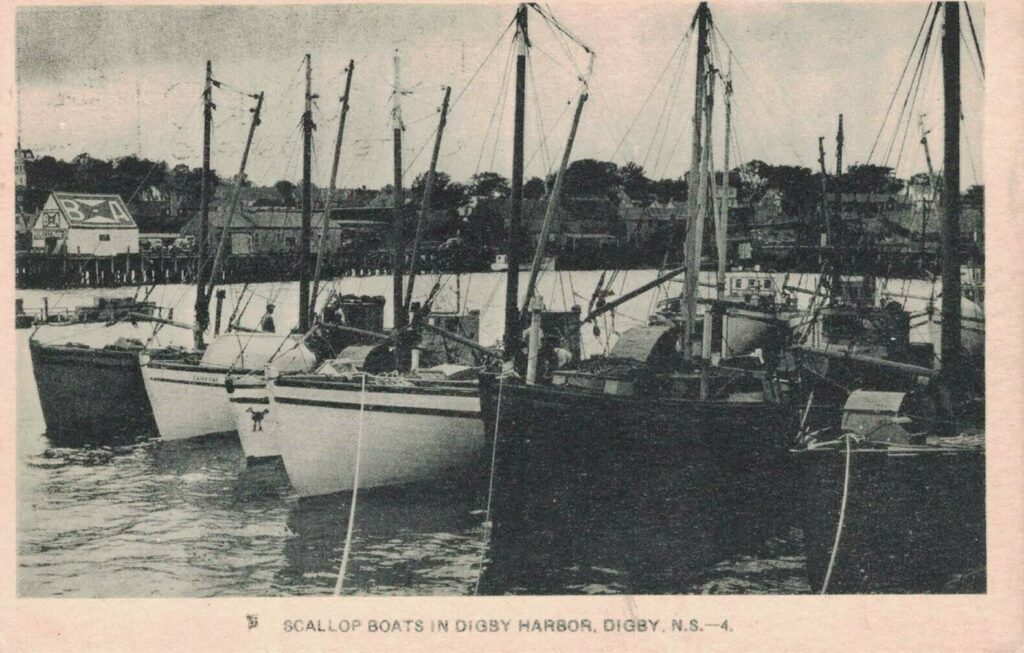
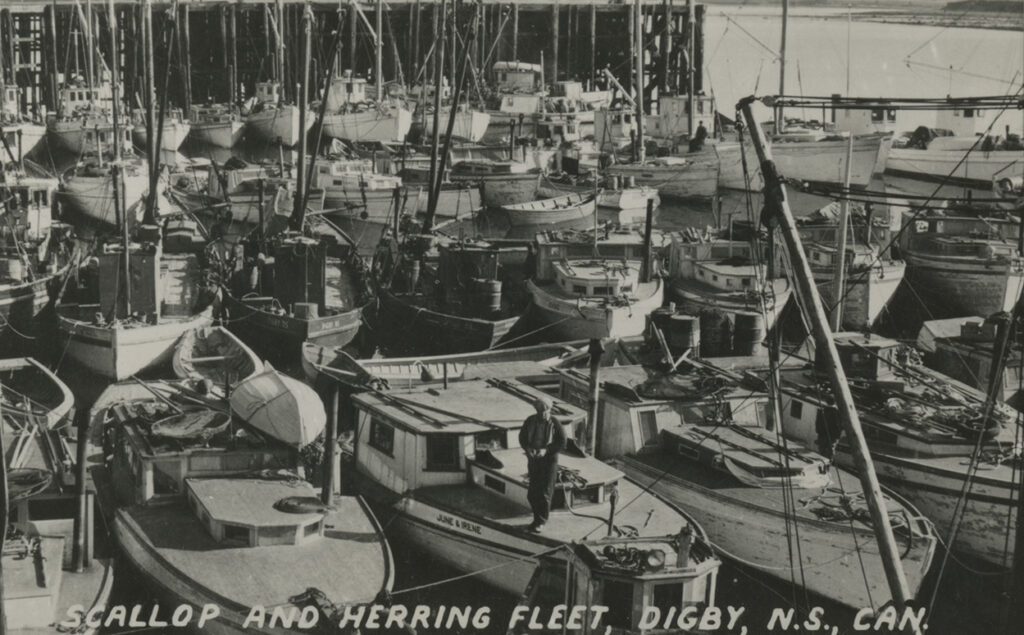
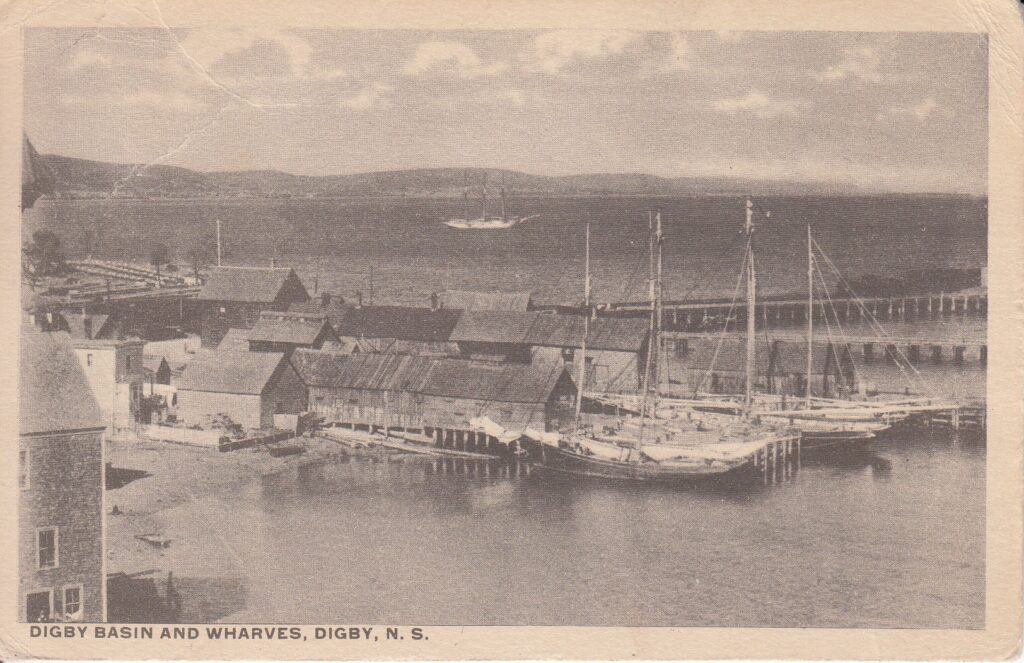
Scallops are caught by towing the drag through the beds on the ocean floor. The bivalves are raked into a bag and hauled aboard the boat, where they are emptied. The scallops are shucked by opening the shells and removing the meat to get the pristine finished product, which is then stored on ice until the vessel returns to port. While scallop fishing hasn’t changed much from what it was a century ago — as many of the same methods of dragging and shucking are still used today — more sustainable methods have also grown in popularity as people have become more environmentally conscious.
Today, Digby carries on a tradition that started over 100 years ago. The town has one of the largest scallop fishing fleets in the world and has grown its beloved pastime into a multi-million dollar industry. Fishermen continue to use traditional harvesting methods known worldwide, which have made a significant impact on Digby’s economy and heritage.
Digby Today
The Admiral Digby Museum is an excellent local history museum with exhibits highlighting the community’s interesting past. The museum is located in a Georgian-style home constructed in the mid-1800s and is one of the oldest structures remaining in the town. The building was purchased in 1968 by the Digby Library Association, and during the 1970s, it became the Admiral Digby Library. In 1972, the society’s name was officially changed to the Admiral Digby Library & Historical Society, which now operates the Admiral Digby Museum.

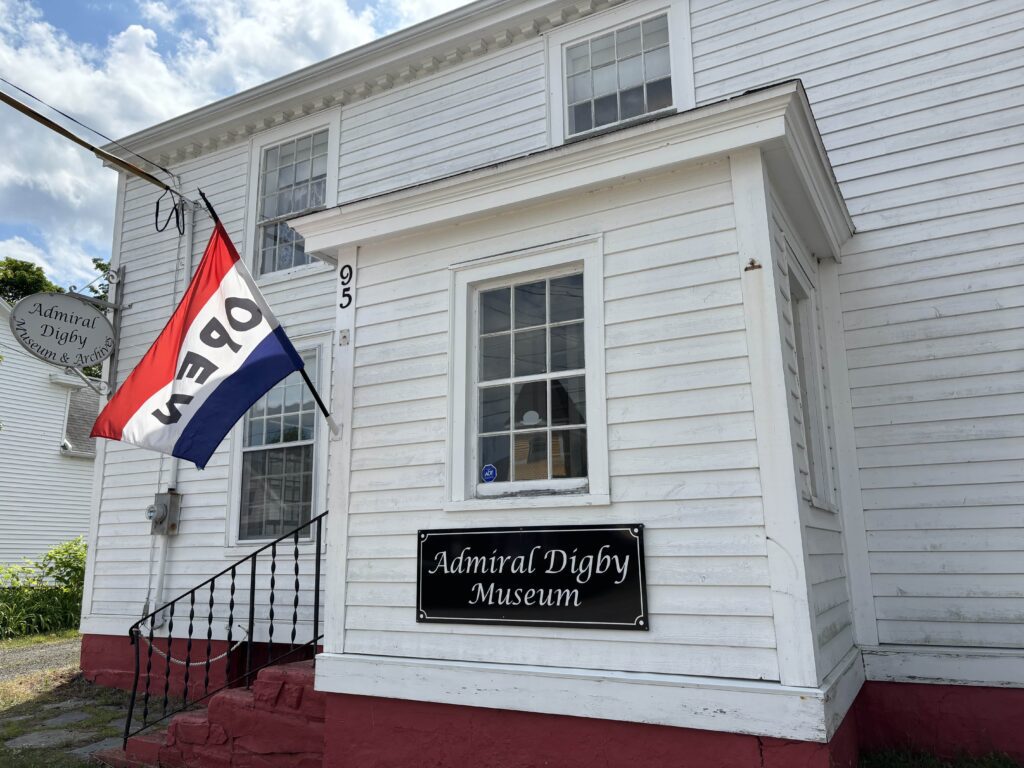

The museum was named after the famed Admiral Digby, who brought Loyalist settlers to the region. It has several fascinating artifacts relating to Digby and the surrounding area’s heritage, with many rooms adorned with period furnishings and antiques, including a parlour room with an 1870s organ and an 1890s hand-crafted grandfather clock. Others include display ship models, vintage clothing, ledgers and navigational equipment. The museum is also known for its Genealogy Research Department, which can assist with discovering your roots in Digby and Digby County.
Down the road in Smiths Cove is The Harbourview Inn. This beautiful bed and breakfast is the perfect getaway when visiting the Annapolis Valley region. The Harbourview Inn was originally built in 1899 and has been hosting summer guests ever since. In 1924, the establishment was one of the first to offer electric lights with power supplied by its own electric plant. On top of the charming inn, the property also offered a salt-water swimming pool, a large dancing pavilion, twenty-seven cottages and a large dining hall for people to enjoy their leisurely summers. During World War II, the cottages and inn were used to house some of the military personnel from nearby Cornwallis.
By the 1970s the cottages were sold, and many were purchased by the same families who had been coming to the area during the summer over the years. After a few different owners, Greg and Belinda Metcalf purchased the inn in 2020. During the COVID-19 pandemic, the couple added considerable investment to further improve the inn, making it a truly wonderful place to stay. The Harbourview Inn continues to offer its guests a superb experience, with beautiful rooms, fantastic amenities and a delicious breakfast.



The Crow’s Nest is a fantastic spot to take in stunning views of Digby Harbour while you enjoy some tasty fresh scallops the area is known for. The business opened in October 2015 in Hillsburn, Nova Scotia, by Jackie Longmire as a simple takeout spot. Due to its popularity, a second location was opened in Digby in March 2016, and since then, the restaurant has been serving delectable seafood to its community.
Digby is a glorious seaside town that takes pride in its fishing heritage. The remarkable Bay of Fundy tides, world-famous scallops and breathtaking natural wonders are more than enough reasons to want to visit.
A big thank you to Greg and Belinda Metcalf from The Harbourview Inn for the wonderful sponsored stay, as well as Andrew from the Admiral Digby Museum for providing me with more information about Digby, the Admiral Digby Library & Historical Society for their incredible photos of Digby, and Jackie Longmire for more information about her business.




